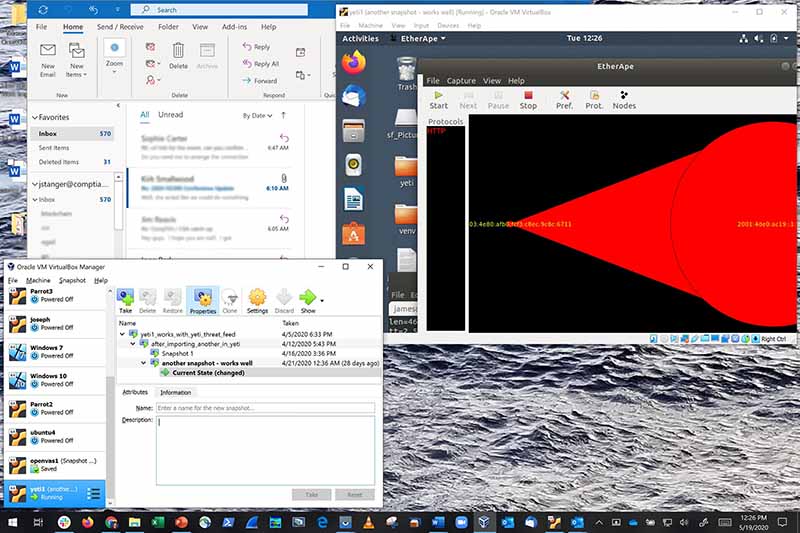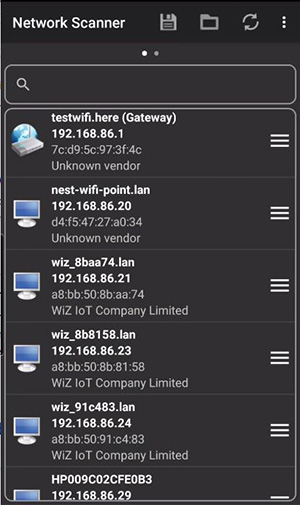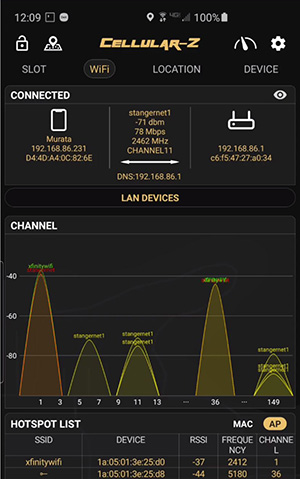One of the great things about IT is that you don’t necessarily need formal training or a college degree to learn the tech skills you need to get a job and advance your career. With equipment you already have at home – or that you can get inexpensively – you can transition from consumer to producer and become a power user in a period of weeks – and a qualified candidate for an IT job in a matter of months.
Practicing at home not only helps you prepare for IT certifications such as CompTIA A+, but it also shows employers that you’re committed to learning new skills and advancing your career. Keep reading to learn more about how to set up a home lab, how to approach your learning and five tech skills you should learn to get into IT.
What You Need to Learn Tech Skills at Home
Because tech is basically everywhere, you can learn tech skills and practice at home with equipment you may already have whenever you have time. Here are some things you might want to include in your home lab. And knowing how to set up a computer network – even when it’s just your home lab – is one of the skills you’ll need for your first IT job.
Mobile Phone
Your mobile phone is a computer, and it’s something you’re already very familiar with. It’s full of powerful networking devices, including the cell phone radio that talks with your mobile phone provider, Wi-Fi and Bluetooth. You know how to use it, so now dig in to see how it works. Grab an old phone, charge it up and start looking beneath the hood.
Home Computer Network
Setting up a home network does not have to be expensive – most of us have a few PCs or Macs humming away. Move from simply surfing the internet to diving in and figuring out how the computers work.
You can also create a new network from old computers. Grab your old one that’s collecting dust or see what you can find from friends and family or places like eBay, Craigslist or garage sales.
To set up a basic home network, you’ll need a switch, cables and some form of connection. You can use you’re your own modem, the one from your internet service provider (ISP) or even the mobile hotspot or network tethering feature on your phone.
Switches can be found for as little as $17 online, and even less if you buy them secondhand. When you have your equipment, connect everything to see how it works.
Operating Systems and Applications
You’ll want to get experience using different operating systems, including Windows, mac OS and Linux. The good news is, you can get Windows and Linux for free. Over time you’ll learn how to troubleshoot problems on these systems and even write scripts to automate tasks.
You’ll also want something for virtualization – such as VMWare or VirtualBox. Working in a virtual environment will give you the freedom to experiment without worrying about damage to your own equipment.
To practice working in the cloud, download free versions of Microsoft Azure, Amazon Web Services (AWS) and Alibaba.
If there is specific program you want to learn – whether it’s part of CompTIA A+ or mentioned in a job description you’ve seen – you may be able to sign up for a trial. But buyer beware that if you provide your credit card info and forget to cancel before your trial period is up, you could incur a fee.
What Tech Skills Should You Practice?
You’ve set up your lab, but what should you do with it? Use the CompTIA A+ exam objectives – which you can download for free – as a road map for the skills you’ll need to get a job at the help desk or in tech support. CompTIA certifications cover the skills needed for IT job roles and are developed by IT pros who know firsthand what those skills are.
5 Tech Skills to Practice at Home
Now the moment you’ve all been waiting for – what skills should you practice and how? Here are 5 tech skills you can practice at home to prepare for CompTIA A+ and a career in IT.
1. Troubleshooting
The troubleshooting skills you hone now will serve you well throughout your IT career. In addition to tech skills, you need solid customer service and communication skills.
One of the first things a good tech support person does is put people at ease. They find ways to virtually hold people’s hands because they are going to be frustrated.
After putting them at ease, you need to understand the problem – what are they trying to do and what is stopping them? Asking questions and listening closely to the responses will help you get the information you need to move forward. Remember, you don’t have to know all the answers – you just have to know how to find the answers.
You can also start familiarizing yourself with remote software tools that IT pros use to control a remote system. Download programs like Zoho Assist, TeamViewer, VNC Connect or LogMeIn to try them out.

Figure 1: Zoho Assist on a mobile phone
Hone your communication skills: Practice these steps in everyday communication to prepare for working at the help desk:
- Repeat the problem back to the person
- Summarize the problem
- Ask questions to try and diagnose the issue
Learn how to use remote software: Download a remote software option on your phone or desktop and practice accessing remote systems, either with the devices in your home lab or with a friend or family member.
2. Operating Systems and Applications
Practice installing operating systems by downloading the ISO files for Linux or Windows. You can download and use Windows 10 for free as long as you don’t use it for production. And because Linux is open source, you can find numerous free options. P.S. Your Chromebook may already have Linux on it.
You can also set up a Linux terminal on your mobile phone. For example, Figure 2 below shows the Termux app on my Android phone. On iPhones, you can use terminal emulator apps such as a-Shell or the included Terminal App.

Figure 2: Termux on an Android phone
Learn about your operating system: Use an app like Termux or Terminal App to conduct a Linux session and learn more about the operating system on your phone.
Backup the system: Create backups with a free or freemium service like Google Drive, Alibaba, Box or Microsoft OneDrive. Set up backup and recovery points in Windows 10, for example. Doing so is free, and it helps you learn a key concept of business continuity and disaster recovery.
Explore support libraries and configuration files: Take a look at the Windows Registry Editor, but for the love of heaven, please don’t make any changes to anything early on! Go to the Run window in Windows 10, type in regedit and hit enter. Again, don’t make any changes here. By opening the Registry Editor, you can start to understand the database (in this case, a flat file database) that Windows uses to configure and manage its running environment.
Understand how applications work: When you click on an icon, what has to line up for the program to run? Click on an icon and then right-click on it. Click around on the tabs for that icon. This will show you how your operating system launches the application and its security settings.
3. Virtualization
Breaking things to figure out how they work is a popular way to learn tech skills. But, no one wants to break the operating system they use every day. To get around this, create a virtual environment and launch any operating system you choose so you can experiment and break things without worrying about the consequences to your own machine! If you can’t figure out how to fix it, you can start from scratch and try again.
I used VirtualBox to set up a “sacrificial” Windows 10 system that I run from my work computer. I can switch back and forth between my main Windows system and the virtualized, sacrificial one.
In the virtualized system, I can make any number of changes, and it doesn’t affect my work computer at all. If I completely destroy it, all I have to do is re-install it using VirtualBox.
In Figure 3, below, I’m running the Ubuntu Linux system named “yeti1,” right next to Microsoft Outlook on my Windows 10 host system.

Figure 3: Using VirtualBox
The Linux system is experiencing a Distributed Denial of Service (DDoS) attack. The red cone you see is showing a massive amount of web (HTTP) traffic. If I somehow “break” that Linux system, my Windows 10 host system is completely unaffected. All I need to do is re-install my Linux system using VMWare, and I’m back to doing hands-on experimentation. And all of this is free – VMWare, the Linux systems and even the Windows systems I’m using are all free to use.
Set up a virtualized operating system: Install VirtualBox or VMWare and then add a Linux or Windows operating system to it. Once this is installed, click the icon on your desktop for your virtualized system to launch it, just like any other application.
Troubleshoot software in the virtualized system: Experiment in that virtualized Windows 10 system by installing and breaking all sorts of software. Then try to fix the problems.
Learn operating system security: Install an open-source security software, like Wireshark, on your virtualized system. I couldn’t do that on my work computer without administrator privileges, but it wasn’t a problem in my virtualized system. I also downloaded the latest version of Ubuntu Linux and installed it using VirtualBox. This helped me learn more about operating system security.
4. Storage
Computers store data, and you need to understand what types of storage is available and when to use each type.
In general, there are three pillars of storage:
- Internal storage: The internal hard disk for your mobile phone or computer
- External storage: Additional local storage like microSD cards, USB thumb drives and external hard drives
- Cloud storage: Storage from cloud providers (see above for examples) that may be free or purchased
Your mobile phone uses all three pillars of storage. On an Android phone, some things may be stored on the phone itself – that’s internal storage. Other things are stored on the microSD card – that’s external storage. And data for apps may be stored in the cloud.
Connect your storage: Gather your external hard drives and thumb drives. (I have a 4 terabyte external hard disk and a half a dozen USB thumb drives that are much, much smaller.) Connect these devices, and then use the File Manager in Windows or Finder in macOS to investigate how they work. Right-click on the drives and view the individual properties. You’ll learn quite a bit.
Explore the file manager: On your phone, file manager apps can help you learn more about how your internal and external storage works.
5. Computer Networking
Before you can troubleshoot a network, you have to understand how it works. To do this, map out on a piece of paper the connections from your device to the internet. You can also install apps on your phone to learn more about how networking devices operate.
On your phone, you’ll find a number of networking devices inside:
- Wi-Fi radio
- Cellular radio
- Near field communication (NFC)
- Global positioning system (GPS)
- Bluetooth
After discovering the what and how of the network, you can then delve more deeply into networking. For example, you can download one of the many network scanner apps on your phone, such as Network Scanner, shown in Figure 5.

Figure 5: Network Scanner on my Android
In Figure 5, above, I’ve conducted a quick scan of my home network using the Network Scanner app. It found my cable modem, some smart LED lights (wiz_8baa74.lan) and an HP printer that has wireless printing enabled (HP009C02CFE0B3).
Download and install apps on your phone: Here are a few apps that will help you learn quite a bit about the network you’re connected to.
|
Android Apps |
iPhone Apps |
| Cellular Z: Provides a nice interface for your mobile and Wi-Fi interfaces. |
Fing or Scany: Similar to Cellular Z, these apps provide statistics for mobile and Wi-Fi connections. They also conduct network scans. |
| Scanner: Scans Wi-Fi and mobile networks to identify all devices on your network. |
Dr. Wi-Fi: Allows you to investigate your local Wi-Fi network connection. |
Figure 6 shows how Cellular Z identified several of the Wi-Fi access points in my home mesh network.

Figure 6: Cellular Z
Install a terminal application: Once you’ve connected to a network, you can then install one of the terminal applications we discussed in the operating systems section. Using this terminal, I can use troubleshooting applications such as ping, arp, host and traceroute.
Learn about your network: Use these apps to learn the following:
- The quality of the connection for your Wi-Fi and mobile tower
- The number of systems attached to your Wi-Fi
- The number of Wi-Fi access points that are nearby
- The number of nearby mobile towers
Reinforcing Your New Tech Skills
The logical follow-up for how to learn tech skills is how to remember them so you can use them on the job.
Here are a few tips for making sure your new skills stick:
- Break up larger skills into smaller elements to better understand how everything works together.
- After reading and exploring, apply your new hands-on skills while they’re fresh in your mind.
- Try and try again – IT is all about breaking things and fixing them. If you don’t get things right the first time, start over and try again.
- Practice practice practice – practice on your home lab, volunteer to help family or friends and look for opportunities to practice your tech skills in the real world.
Practice in your home lab and with the CompTIA CertMaster suite of products for CompTIA A+. These online learning tools provide a real, virtual environment where you can practice your hands-on skills for the CompTIA A+ exam and for help desk and tech support jobs.
No matter how you do it, get as much hands-on practice as you can with your newfound tech skills. It will help you go into your CompTIA A+ exam with confidence and succeed in your IT career.
Ready to start studying? Writing out your plan will set you up for success. Download our free training plan worksheet to help get organized and make your dream a reality.

